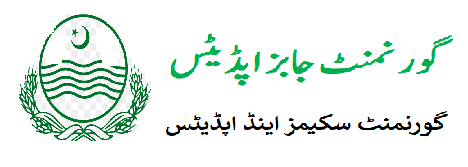Explore the district-wise loan quotas under Punjab’s Apni Chhat Apna Ghar Program to secure your future home today! In a landscape where every district has its unique financial needs, the Apni Chhat Apna Ghar Program emerges as a beacon of hope, offering tailored loan quotas to citizens across Punjab. Understanding how these quotas are distributed is crucial for anyone looking to benefit from this initiative. Today, we’re diving deep into the district-wise loan allocation system, breaking it down so you can easily grasp the opportunities awaiting you.
Understanding the Apni Chhat Apna Ghar Program
What is the Apni Chhat Apna Ghar Program?
The Apni Chhat Apna Ghar Program is a government initiative aimed at providing affordable housing solutions to the residents of Punjab. Through a meticulously planned loan system, this program ensures that every district receives a fair share of funds, empowering citizens to achieve their dream of homeownership.
Why District-Wise Quotas Matter
District-wise quotas ensure that the loan distribution is equitable, considering the population size, economic needs, and housing demands of each district. By allocating loans based on these factors, the program fosters balanced regional development and reduces economic disparities across Punjab.
A Closer Look at District-Wise Loan Distribution
The Mechanics of Loan Allocation
Loan allocation under this program isn’t a one-size-fits-all process. It’s a carefully calculated system that takes into account various district-specific factors:
- Population Size: Larger districts receive a higher quota to accommodate more applicants.
- Economic Needs: Districts with lower average incomes or higher poverty rates may receive more funds to support their residents.
- Housing Demand: Areas with higher housing demand get prioritized to ensure funds are used where they are needed most.
How Quotas Are Determined
The quota for each district is determined through a comprehensive analysis involving:
- Census Data: Used to gauge population size and density.
- Economic Surveys: Assessing the economic conditions of each district.
- Housing Market Trends: Identifying where housing is most urgently needed.
Annual Reviews and Adjustments
The program isn’t static. Quotas are reviewed annually to ensure they reflect current needs. This flexibility allows the program to adapt to changing circumstances, ensuring ongoing fairness in loan distribution.
Navigating the Loan Application Process
Eligibility Criteria
To apply for a loan under the Apni Chhat Apna Ghar Program, you must meet specific eligibility criteria, which may include:
- Punjab Residency: You must be a resident of Punjab.
- Income Bracket: Your income should fall within the prescribed range to qualify for subsidized loans.
- No Prior Ownership: First-time homebuyers are given priority.
Required Documentation
The loan application process requires a few essential documents:
- CNIC (Computerized National Identity Card)
- Proof of Income: Salary slips, bank statements, or tax returns.
- Property Documentation: If applicable, documents related to the property you wish to purchase or build on.
Step-by-Step Application Guide
- Visit the Official Website: Start your application online.
- Fill Out the Application Form: Provide accurate information and double-check for errors.
- Upload Required Documents: Ensure all your documents are in order.
- Submit Your Application: After reviewing your details, submit your application and wait for confirmation.
Post-Submission Process
Once your application is submitted, it undergoes a review process. If approved, you’ll receive a notification with further instructions on how to proceed. If additional information is required, you’ll be contacted to provide the necessary details.
Read More: Apni Chat Apna Ghar scheme Punjab: Houses for Punjab’s Low-Income Families
Breaking Down the District-Wise Loan Quotas
Major Districts and Their Quotas
The Apni Chhat Apna Ghar Program provides detailed information on loan quotas across various districts. Here’s a breakdown of some major districts and their allocated loan amounts:
- Lahore: Lahore, being the largest district, has a significant loan quota to accommodate its massive population and high housing demand.
- Faisalabad: As an industrial hub, Faisalabad’s quota reflects the needs of its growing working-class population.
- Rawalpindi: With its strategic location and economic importance, Rawalpindi enjoys a substantial share of the loan allocation.
- Multan: Multan’s growing infrastructure and urban development needs are met with a robust loan quota.
Smaller Districts and Their Importance
Smaller districts, while receiving lower quotas, play a crucial role in the overall success of the program. The funds allocated to these areas ensure that rural and underdeveloped regions aren’t left behind:
- Bahawalpur: Recognized for its cultural heritage, Bahawalpur’s loan quota is designed to preserve its unique character while promoting modern housing.
- Sialkot: Famous for its manufacturing industry, Sialkot receives a quota that supports both residential and commercial development.
- Gujranwala: With its expanding population, Gujranwala’s quota is tailored to meet its increasing housing needs.
Special Considerations for Underdeveloped Areas
The program gives special attention to underdeveloped areas by allocating higher funds to districts with lower infrastructure and development indices. This approach helps uplift the living standards in these regions, promoting overall economic growth.
Maximizing Your Chances for Loan Approval
Tips for a Successful Application
Applying for a loan under the Apni Chhat Apna Ghar Program can be competitive. Here’s how you can maximize your chances:
- Complete Your Application: Ensure all sections of the application are filled out correctly.
- Double-Check Documentation: Missing or incorrect documents can delay your application.
- Follow-up: Keep track of your application status and respond promptly to any requests for additional information.
Common Pitfalls to Avoid
Avoid these common mistakes when applying for a loan:
- Inaccurate Information: Providing false information can lead to your application being rejected.
- Late Submission: Submit your application before the deadline to avoid missing out on available funds.
- Incomplete Documentation: Make sure all required documents are attached and in the correct format.
The Impact of Loan Distribution on Punjab’s Economy
Boosting Local Economies
The district-wise loan distribution isn’t just about providing homes; it’s about stimulating local economies. When residents have access to affordable loans, they can invest in property, which in turn:
- Creates Jobs: Construction projects generate employment opportunities.
- Increases Consumer Spending: Homebuyers are more likely to invest in home goods and services.
- Attracts Investment: Well-developed districts attract both domestic and international investors.
Reducing Economic Disparities
By allocating funds to underdeveloped districts, the program helps bridge the economic gap between different regions. This targeted approach ensures that all districts have the opportunity to thrive, fostering a more balanced economic landscape across Punjab.
Conclusion
A Future of Opportunity
The Apni Chhat Apna Ghar Program represents more than just a housing initiative; it’s a blueprint for a prosperous future. By understanding how the district-wise loan quota system works, you can position yourself to take full advantage of the opportunities this program offers. Whether you’re in Lahore or a smaller district like Bahawalpur, there’s a quota designed to help you achieve your dream of homeownership. Now is the time to act—start your journey today and be a part of Punjab’s thriving future.
District-Wise Quota of Loans
| Sr. No. | Zone | PHATA Region | Districts | Loan Distribution | PHATA Region-wise Units | Packaging |
|---|---|---|---|---|---|---|
| 1 | Center | Bhakar | Bhakar | 283 | 1913 | 4423 |
| 2 | Khushab | 243 | ||||
| 3 | Layyah | 366 | ||||
| 4 | Mianwali | 307 | ||||
| 5 | Muzaffargarh | 714 | ||||
| 6 | Faisalabad | Chiniot | 313 | 2511 | ||
| 7 | Faisalabad | 851 | ||||
| 8 | Jhang | 451 | ||||
| 9 | Sargodha | 520 | ||||
| 10 | Toba Tek Singh | 376 | ||||
| 11 | North | Lahore | Gujranwala | 657 | 5804 | 8003 |
| 12 | Hafizabad | 302 | ||||
| 13 | Kasur | 484 | ||||
| 14 | Lahore | 1690 | ||||
| 15 | Nankana | 314 | ||||
| 16 | Narowal | 357 | ||||
| 17 | Okara | 518 | ||||
| 18 | Pakpattan | 401 | ||||
| 19 | Sheikhupura | 512 | ||||
| 20 | Sialkot | 570 | ||||
| 21 | Rawalpindi | Attock | 287 | 2198 | ||
| 22 | Chakwal | 263 | ||||
| 23 | Gujrat | 466 | ||||
| 24 | Jhelum | 225 | ||||
| 25 | Mandi Bahauddin | 358 | ||||
| 26 | Rawalpindi | 600 | ||||
| 27 | South | Bahawalpur | Bahawalnagar | 454 | 1684 | 5074 |
| 28 | Bahawalpur | 517 | ||||
| 29 | Rahim Yar Khan | 714 | ||||
| 30 | Multan | DG Khan | 498 | 3390 | ||
| 31 | Khanewal | 458 | ||||
| 32 | Lodhran | 380 | ||||
| 33 | Multan | 726 | ||||
| 34 | Rajanpur | 368 | ||||
| 35 | Sahiwal | 443 | ||||
| 36 | Vehari | 517 | ||||
| 17500 | 17500 | 17500 |
Frequently Asked Questions
- What is the main objective of the Apni Chhat Apna Ghar Program?
The primary goal of the program is to provide affordable housing solutions by offering district-specific loan quotas, ensuring equitable development across Punjab.
- Who is eligible to apply for these loans?
Eligibility typically includes being a resident of Punjab, falling within a specified income bracket, and being a first-time homebuyer.
- How are loan quotas determined for each district?
Quotas are determined based on factors like population size, economic needs, and housing demand within each district.
- What documents are required for the loan application?
Applicants need to provide their CNIC, proof of income, and any relevant property documentation.
- Can I apply for a loan if I already own property?
Priority is given to first-time homebuyers, but specific conditions may vary, so it’s best to check the latest guidelines.

